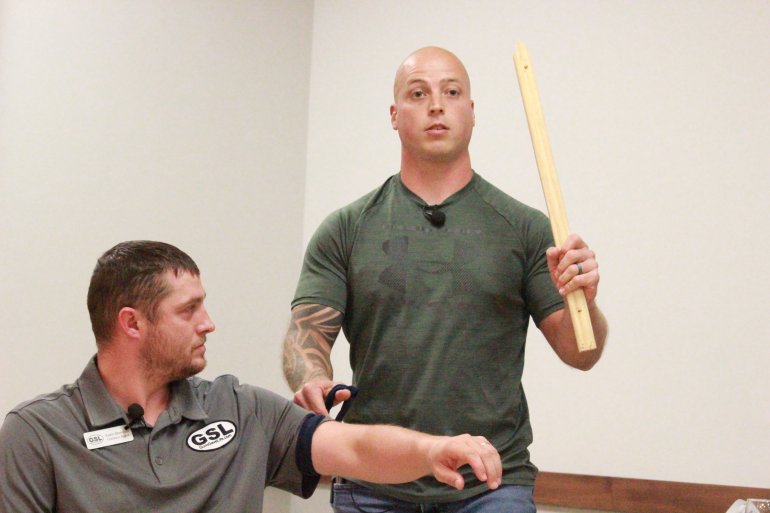
In Charleston, we hosted Phillip Mater who works locally as an EMT. He shared a crash course in bleeding control for our audience members along with a couple of other things lay-people can do to help injured people until professional care takes over.
The “Good Samaritan” law protects lay people from civil liability when making a good-faith effort to provide care in the immediate aftermath of an injury. And having some basic skill sets can save lives.

Why are basic bleeding control skill sets important? If you’re out in the woods hiking or hunting and have a problem, it may take rescue / medical personnel a while to get there. Some self-care or treatment of another person’s arterial bleeding may make the difference between life and death.
Need another reason? There may be a delay before EMTs arrive as police secure a crime scene before declaring it safe to have medical personnel treat the wounded. The bad actor may have left the scene or been taken out, but it takes police a few minutes to respond and do their thing. Then there’s always the worst case scenario in this day and age: Uvalde-like police (or cops at the Pulse Nightclub terror attack) “establishing a perimeter and waiting for resources” for an hour or two before taking out the threat.
And then there’s cases where EMT response is delayed because the closest ambulances are on other calls.
Phillip noted how the average person has about five liters of blood and serious problems will result from the loss of about 1.5 liters. If there’s bright red arterial bleeding, that needs immediate action such as a tourniquet. Other serious bleeding may be controlled with the application of a pressure dressing.
Clearly big on improvisation for everyday people, he showed how to use a t-shirt as a tourniquet and how to fashion an improvised pressure dressing from nothing more than a roll of gauze. He also demonstrated how to fashion a chest seal and how to care for patients with impaled, embedded objects.
Speaking of tourniquets, Mr. Mater favors only tightening them enough so that bleeding can be controlled at the site of the injury so that some blood can still make it to healthy tissue nearby, reducing the risk of tissue damage.
If the injured are suffering from gunshot wounds, the first order of business is to make sure the violent actor isn’t still posing a threat. And then make sure you do a quick patient assessment to find all of the new perforations, entry and exit.

He also mentioned things to avoid: Don’t use tampons (don’t put anything into a wound unless you’re trained), don’t remove blood-soaked dressings (instead apply another dressing over it) and in the case of cuts, amputations and tissue/intestines hanging out, try not to let the skin and tissue at the wound site dry out. Sterile saline is ideal, and clean water will work. Either way, keep it irrigated.

Like many of us at GSL, Mater described himself as a fan of the Israeli battle dressings (pictured above). They’re versatile, easy to carry and easy to use, even for lay-people.
Additionally, “STOP THE BLEED” courses are available across Illinois. Oftentimes they are offered for free or with nominal fees to enroll. stopthebleed.org
The life you save may be your own.
